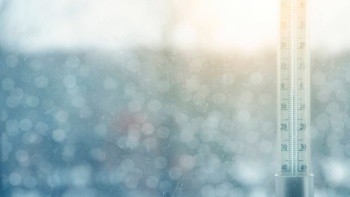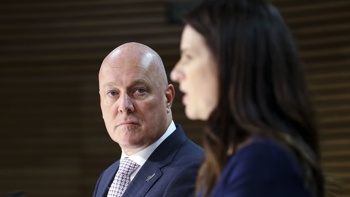
Modellers still expect this Omicron wave to peak within coming weeks – but there are two big variables that could slow or grow it ahead of Christmas.
That’s a potential “circuit-breaking” effect of schools and workplaces emptying out ahead of the break, but also an acceleration in cases driven by super-spreading from more social gatherings.
It’s prompted another plea from public health experts for Kiwis not to bring home the coronavirus for Christmas, amid the ongoing risks and unknowns of reinfections.
On Tuesday, daily reported cases topped 7000 for the first time since July – and by the end of the week the seven-day rolling average was sitting at more than 5100.
While the wave’s growth is now tracking toward the lower end of initially modelled estimates, experts are looking to late December as its peak.
If a current doubling time of about four weeks holds steady or slows, it is possible the wave might top out before then – but this isn’t yet clear.
“Whilst the size of this variant-driven wave in terms of infections and cases is uncertain, we do know that it will produce a wave of hospitalisations and deaths as well,” modeller Dr Emily Harvey said.
As at Friday, more than 430 people were in hospital with the virus, including 14 in ICU.
The surge is mainly being powered by waning immunity coupled with a stew of immunity-evading Omicron subvariants, including BA.2.75 lineages, now accounting for about a quarter of sequenced cases, the similarly rising BQ.1.1, and hybrid strains XBB and XBC.
Reinfections are also making up an increasing proportion of new infections – and some 27 per cent of the cases we know about.
- Watch: 'Not out of the woods' - Covid summer wave may hit 11k cases a day
- Another wave risks hundreds more Covid deaths this year, expert warns
Dr Dion O’Neale, of Covid-19 Modelling Aotearoa, estimates New Zealand’s background prevalence rate at somewhere around 3 per cent – meaning that, on average, gatherings of more than 30 people could likely have at least one infected person.
“Case numbers are definitely going up at the moment, and if we all have a lot of indoor parties, we might actually end up driving them quite high before Christmas.”
Given human behaviour was a notoriously difficult thing to model – especially without an infection prevalence survey in place – O’Neale said it wasn’t clear how large an impact function season would have on this wave.
But it was likely to be significant.
“If you’ve got case numbers doubling at some length of time, and you’re starting from a higher value, doubling them means a whole lot more cases.”
The breaking of school terms, however, could help take the pressure off.
“We’ve seen this effect really clearly by looking at Flu Tracking data for incidence of Covid-like symptoms, which sharply drops in the middle of winter when school holidays start,” he said.
“Over the Christmas holiday break, we’d expect to see the same thing happen.”
O’Neale said Kiwis could do their bit toward lowering the wave by wearing masks when in crowded indoor environments, and staying home and getting tested if they had symptoms themselves.
“If you’ve been invited to a Christmas function that’s indoors, and it’s one you don’t really care about going to, it might be a good idea to skip it.”
University of Auckland aerosol chemist Dr Joel Rindelaub encouraged those organising gatherings this month to limit the number of venues, and pick well-ventilated ones.
“If you want to stay healthy over Christmas and see all your whānau, I think it’s also a good idea to wear a mask whenever you’re in crowded places like bars or restaurants.”
Otago University epidemiologist Dr Amanda Kvalsvig said that, in the face of “very clear evidence of risk”, it was frustrating that New Zealand appeared to be under-using well-established, cost-effective protections like masks and rapid antigen tests at large events.
“The research literature continues to show substantial and growing evidence about the health risks from ongoing waves of Covid-19 infection, with further impacts in turn on the safe functioning of health, education, and other systems,” she said.
“So, the big question is why the New Zealand public isn’t being advised every day that it’s in their best interests to avoid getting infected and reinfected.”
Experts have also called for better access to antiviral medications, which one under-review study indicated could help reduce symptoms of Long Covid.
Take your Radio, Podcasts and Music with you









